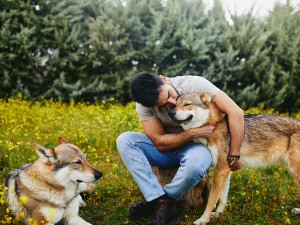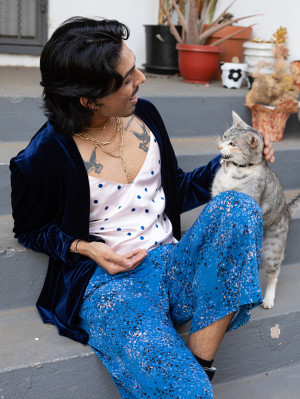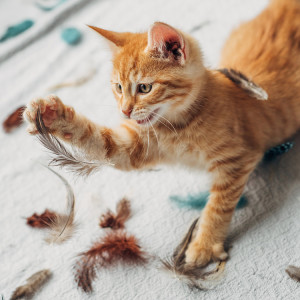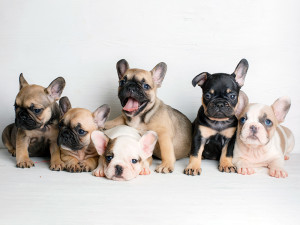Scientists Discover Why Some Cats Sparkle—Yes, Some Cats Sparkle
It’s called the glitter gene.

Share Article
Some cats look ready to ride in a limo to a black-tie gala, tuxedo and all. Others appear fit for a cameo in a Halloween movie. Most look just about perfect where they are, curled up on the couch. And then there’s a much rarer type of cat (in fact, you may never have even seen one) — the kind that seems like they just rolled home from a disco club, covered head to toe in glitter. The phenomenon is most common in Bengal cats, a breed with a complicated breeding history, and it has stumped scientists for years. Now, researchers have discovered the geneopens in new tab that causes some cats to appear shimmery.
Scientists studied the DNA of 3,000 Bengal cats. They found that an alteration in the gene Fgfr2 is related to the sparkly look of some Bengals. Interestingly, the gene isn’t related to the cat’s wild ancestors; it exists in domesticated cats, too. “Fgfr2 is a gene found in all mammals that is important for embryonic development and organogenesis,” Kelly McGowan, a co-author of the study, told Popular Mechanics.opens in new tab “Our results show that while a complete loss of Fgfr2 is lethal, a moderate reduction causes a desirable trait to manifest mainly in the hair.”
Only about 60 percent of Bengal cats have the extremely rare trait. According to Wisdom Panel,opens in new tab out of five million tested cats, only 5,513 carry the glitter gene.
The tough truth about Bengal breeding
Bengals are a relatively new breed, created in California in 1960s as a cross between a domestic cat and an Asian leopard. Hybrid cats like Bengals are controversial; in fact, Bengal cats are often illegal to keep unless they are many generationsopens in new tab away from their leopard ancestors — in some places, including New York City and Hawaii, they’re illegal altogether.opens in new tab
Hybrid cats are partly wild — and according to the Wildcat Sanctuaryopens in new tab, many who choose to raise hybrid breeds aren’t prepared for what they’re getting into. Because hybrid cats often have more behavioral issues or higher energy than domesticated cats, they’re frequently turned over to shelters and rescues.
Plus, all designer-breed cats carry the danger of health problems down the line. As designer cats are bred with other designer cats and gene pools become more and more constricted, offspring begin to suffer from preventable diseases. Bengals are particularly prone to gingivitis, irritable bowel disease, hypertrophic cardiomyopathy, and more conditions — and the vet bills stack up. “No veterinarian wants to see an animal have to struggle with these kinds of ongoing issues, all so that the owner can have an exotic or unique-looking cat,” Dr. Julie Hunt,opens in new tab a veterinary consultant for Embrace Pet Insuranceopens in new tab, told Kinship.
There’s also a financial component. Bengal cats are often extremely expensive, which motivates breeders to continue their practice. According to the American Society for the Prevention of Cruelty to Animals (ASPCA),opens in new tab 3.2 million cats enter the shelter system in the United States each year. Given the comparatively cheap price of adopting a cat and the number of pets already living in need, rescuing seems the way to go. Maybe your adoptee won’t technically sparkle — but they’ll bring plenty of light to your life, all the same.

Sio Hornbuckle
Sio Hornbuckle is the Assistant Editor at Kinship, where they frequently write for the site. As a writer, they specialize in pet news, animal science, and pop culture. They live in New York City with their cat, Toni Collette.
Related articles
What Are the Consequences of Breeding Designer Cats?
As shelters overflow with animals, it’s worth asking.
![Wolfdog (Wolf/Dog Hybrid) don't always make good pets]()
Do Wolfdogs Make Good Pets?
Experts say these hybrid animals should be wild and free.
![Dark-haired woman holding her ragdoll cat]()
7 “Purebred” Cat Breeds Likely to Suffer from Genetic Disorders
Especially while shelters are overcrowded, consider adopting a cat.
![Happy stylish latino queer person looking comfortable on porch steps with gray cat.]()
Cats Lifespan: How Long Do Cats Live? And What to Expect
They are the absolute light of your life. Here’s how you can help them live as close to forever as possible.
![A cute orange tabby kitten playing with feathers.]()
Is Orange Cat Behavior Real? The Truth Behind the TikTok Trend
Your TikTok algorithm would like you to think so, but the experts weigh in.
![Group french bulldog puppies.]()
Shelters Are Filling Up With “Designer Dogs”—Here’s Why
Want a purebred? Here’s yet another reason you should rescue one.





